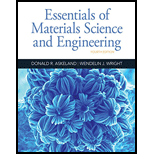
Interpretation:
Considering the depth of material, the concentration profile should be determined. Also, the graph for the profile P for pre-deposition process should be plotted.
Concept introduction:
Constant source diffusion is the relationship of diffusion source with depth, diffusion coefficient and time. The relationship is given by using the below equation,
Where,
D is the diffusion coefficient.
t is the time.
x is the depth.
Constant source diffusion is of two types:
- Pre deposition step: It is the first step for constant source diffusion in which a small quantity of impurity is doped using the constant source.
- Drive in deposition: It is the second step for constant source diffusion in which the material is maintaining the higher value of temperature for a certain period of time.
Equation used for calculating the diffusion is,
Fick's Law of diffusion: This law states that molar flux is directly proportional to concentration gradient. The law is stated as:
Where,
J is the molar flux defined as the number of atoms passing per unit area per unit time.
D is the diffusion coefficient in
Factors affection diffusion are as follows:
- Temperature
- Diffusion coefficient
The following equation is stated as:
Where,
Q is the activation energy in calorie/ mole.
R is universal gas constant in
T is the absolute temperature in kelvin.
Explanation of Solution
Given Information:
The given equation for basis is:
Where,
c is the concentration considering pre deposition function.
D is the diffusion coefficient.
X is the depth.
T is the time.
erf is the error function.
The given boundary conditions are:
Depth =
Concentration of P at depth of
The temperature at which material is conducted is
Value of diffusion coefficient is
Total time for carrying out the process is
Equation considered for calculation is,
On integrating the above equation within limits,
Thus, the equation considered for calculation is,
Assuming the various values of depth required for calculation. Assumed values of depth are,
Calculation of concentration with respect to time and depth. Considering depth as
Value of diffusion coefficient (D) is
Total time for carrying out the process is
Substituting the given value in the above relation,
Using table for calculation of error function,
Thus, concentration at a depth of
Calculation of concentration with respect to time and depth. Considering depth as
Value of diffusion coefficient (D) is
Total time for carrying out the process is
Substituting the given value in the above relation,
When the value of error function exceeds the range of limit 4. The formula used for calculation of error function is,
Thus, concentration at a depth of
Calculation of concentration with respect to time and depth. Considering depth as
Value of diffusion coefficient (D) is
Total time for carrying out the process is
Substituting the given value in the above relation,
When the value of error function exceeds the range of limit 4. The formula used for calculation of error function is,
Thus, concentration at a depth of
Calculation of concentration with respect to time and depth. Considering depth as
Value of diffusion coefficient (D) is
Total time for carrying out the process is
Substituting the given value in the above relation,
When the value of error function exceeds the range of limit 4. The formula used for calculation of error function is,
Thus, concentration at a depth of
Calculation of concentration with respect to time and depth. Considering depth as
Value of diffusion coefficient (D) is
Total time for carrying out the process is
Substituting the given value in the above relation,
When the value of error function exceeds the range of limit 4. The formula used for calculation of error function is,
Thus, concentration at a depth of
Calculation of concentration with respect to time and depth. Considering depth as
Value of diffusion coefficient (D) is
Total time for carrying out the process is
Substituting the given value in the above relation,
When the value of error function exceeds the range of limit 4. The formula used for calculation of error function is,
Thus, concentration at a depth of
Calculation of concentration with respect to time and depth. Considering depth as
Value of diffusion coefficient (D) is
Total time for carrying out the process is
Substituting the given value in the above relation,
When the value of error function exceeds the range of limit 4. The formula used for calculation of error function is,
Thus, concentration at a depth of
Calculation of concentration with respect to time and depth. Considering depth as
Value of diffusion coefficient (D) is
Total time for carrying out the process is
Substituting the given value in the above relation,
When the value of error function exceeds the range of limit 4. The formula used for calculation of error function is,
Thus, concentration at a depth of
Calculation of concentration with respect to time and depth. Considering depth as
Value of diffusion coefficient (D) is
Total time for carrying out the process is
Substituting the given value in the above relation,
When the value of error function exceeds the range of limit 4. The formula used for calculation of error function is,
Thus, concentration at a depth of
The table represents the data of concentration with variation in depth,
| Depth | Concentration |
Based on the given values drawing graph of concentration versus depth,
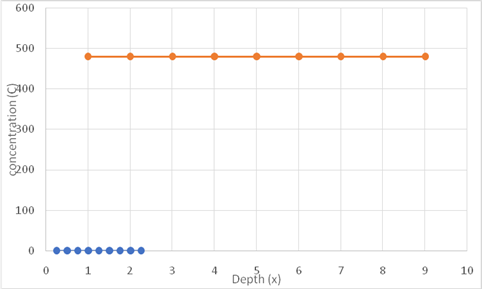
Thus, the required graph of concentration versus depth is shown above. As for pre deposition process concentration has dependency on time and depth, blue line is showing variation of concentration versus time and yellow line represents the variation of concentration with time.
Want to see more full solutions like this?
Chapter 5 Solutions
Essentials Of Materials Science And Engineering
 MATLAB: An Introduction with ApplicationsEngineeringISBN:9781119256830Author:Amos GilatPublisher:John Wiley & Sons Inc
MATLAB: An Introduction with ApplicationsEngineeringISBN:9781119256830Author:Amos GilatPublisher:John Wiley & Sons Inc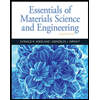 Essentials Of Materials Science And EngineeringEngineeringISBN:9781337385497Author:WRIGHT, Wendelin J.Publisher:Cengage,
Essentials Of Materials Science And EngineeringEngineeringISBN:9781337385497Author:WRIGHT, Wendelin J.Publisher:Cengage, Industrial Motor ControlEngineeringISBN:9781133691808Author:Stephen HermanPublisher:Cengage Learning
Industrial Motor ControlEngineeringISBN:9781133691808Author:Stephen HermanPublisher:Cengage Learning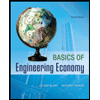 Basics Of Engineering EconomyEngineeringISBN:9780073376356Author:Leland Blank, Anthony TarquinPublisher:MCGRAW-HILL HIGHER EDUCATION
Basics Of Engineering EconomyEngineeringISBN:9780073376356Author:Leland Blank, Anthony TarquinPublisher:MCGRAW-HILL HIGHER EDUCATION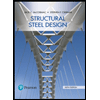 Structural Steel Design (6th Edition)EngineeringISBN:9780134589657Author:Jack C. McCormac, Stephen F. CsernakPublisher:PEARSON
Structural Steel Design (6th Edition)EngineeringISBN:9780134589657Author:Jack C. McCormac, Stephen F. CsernakPublisher:PEARSON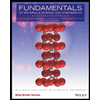 Fundamentals of Materials Science and Engineering...EngineeringISBN:9781119175483Author:William D. Callister Jr., David G. RethwischPublisher:WILEY
Fundamentals of Materials Science and Engineering...EngineeringISBN:9781119175483Author:William D. Callister Jr., David G. RethwischPublisher:WILEY





